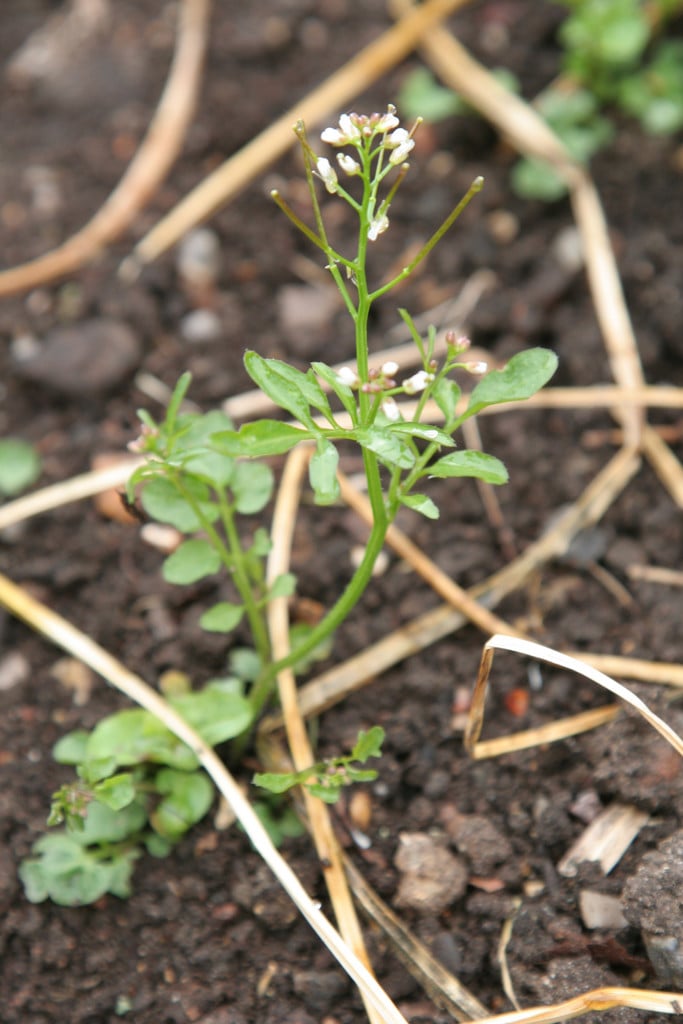Cardamine flexuosa
wavy bittercress
A fast-growing annual or biennial, with pinnate leaves and small white flowers on wavy stems. It is often found in damp shady spots where it can grow up to 50cm high, though it is usually shorter in garden environments

Size
Ultimate height
0.1–0.5 metresTime to ultimate height
1 yearUltimate spread
0.1–0.5 metresGrowing conditions
Moisture
Moist but well–drained, Poorly–drainedpH
Acid, Alkaline, NeutralColour & scent
| Stem | Flower | Foliage | Fruit | |
| Spring | White | Green | ||
|---|---|---|---|---|
| Summer | White | Green | ||
| Autumn | White | Green | ||
| Winter |
Position
- Full sun
- Partial shade
Aspect
East–facing or North–facing or South–facing or West–facing
Exposure
Exposed or Sheltered Hardiness
H4Botanical details
- Family
- Brassicaceae
- Native to GB / Ireland
- Yes
- Foliage
- Deciduous
- Habit
- Clump forming
- Genus
Cardamine are herbaceous perennials with simple, palmately or pinnately divided leaves and short racemes of 4-petalled white, yellow, pink or purplish flowers in spring or summer
- Name status
Correct
How to grow
Cultivation
Grows best in moist, shady conditions, but will tolerate a range of positions and soil types. Edible, with a peppery taste, similar to cress and used in the same way. Self-seeds readily, but unwanted plants are easily removed by hand weeding or hoeing. See the advice page on bittercress for more details
Propagation
Propagates by seed produced prolifically through the growing season and dispersed explosively from seed pods. Seeds are sticky when wet and can be spread on shoes and clothing
Suggested planting locations and garden types
- Wildlife gardens
Pruning
No pruning required
Pests
Generally pest-free
Diseases
May be susceptible to club root
Get involved
The Royal Horticultural Society is the UK’s leading gardening charity. We aim to enrich everyone’s life through plants, and make the UK a greener and more beautiful place.